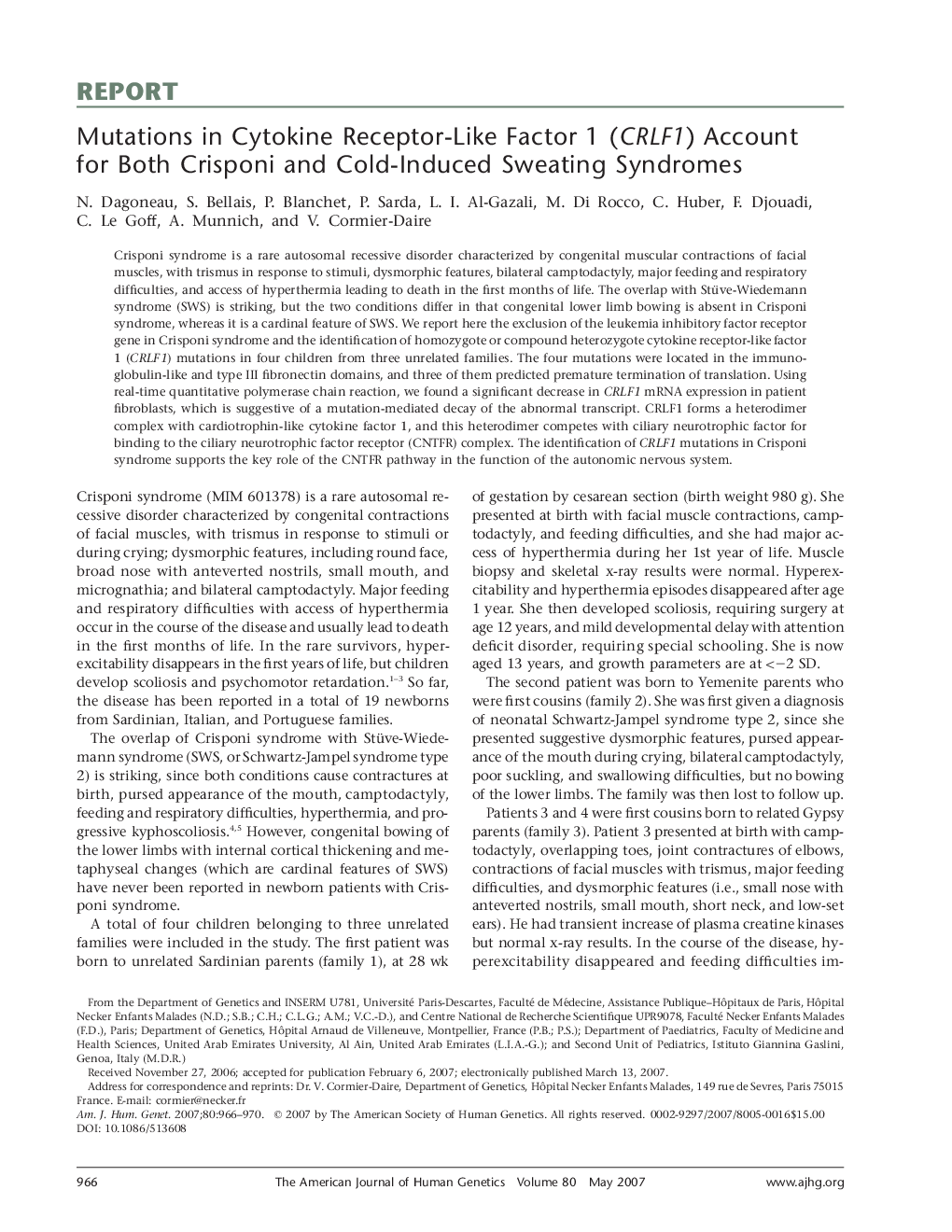| Article ID | Journal | Published Year | Pages | File Type |
|---|---|---|---|---|
| 2811991 | The American Journal of Human Genetics | 2007 | 5 Pages |
Crisponi syndrome is a rare autosomal recessive disorder characterized by congenital muscular contractions of facial muscles, with trismus in response to stimuli, dysmorphic features, bilateral camptodactyly, major feeding and respiratory difficulties, and access of hyperthermia leading to death in the first months of life. The overlap with Stüve-Wiedemann syndrome (SWS) is striking, but the two conditions differ in that congenital lower limb bowing is absent in Crisponi syndrome, whereas it is a cardinal feature of SWS. We report here the exclusion of the leukemia inhibitory factor receptor gene in Crisponi syndrome and the identification of homozygote or compound heterozygote cytokine receptor-like factor 1 (CRLF1) mutations in four children from three unrelated families. The four mutations were located in the immunoglobulin-like and type III fibronectin domains, and three of them predicted premature termination of translation. Using real-time quantitative polymerase chain reaction, we found a significant decrease in CRLF1 mRNA expression in patient fibroblasts, which is suggestive of a mutation-mediated decay of the abnormal transcript. CRLF1 forms a heterodimer complex with cardiotrophin-like cytokine factor 1, and this heterodimer competes with ciliary neurotrophic factor for binding to the ciliary neurotrophic factor receptor (CNTFR) complex. The identification of CRLF1 mutations in Crisponi syndrome supports the key role of the CNTFR pathway in the function of the autonomic nervous system.
